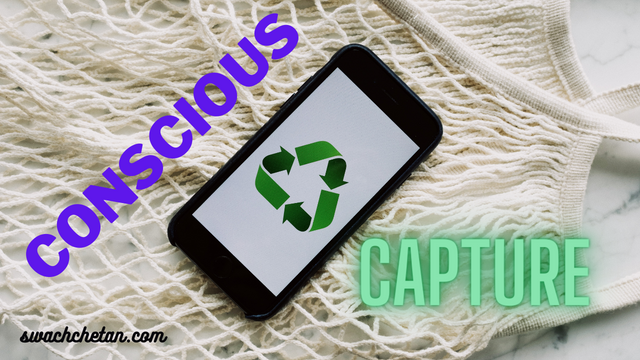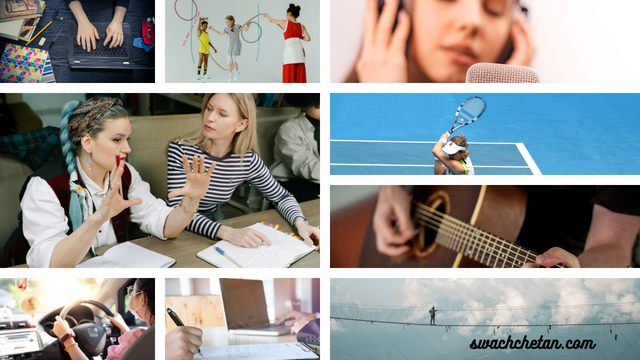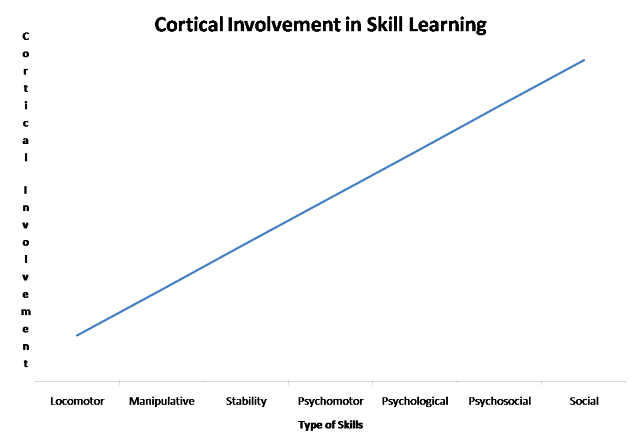“CONSCIOUS CAPTURE”
Application of Conscious Capture
Why does Conscious Capture happen?
How does Conscious Capture happen?
Implications of Conscious Capture
How do we overcome Conscious Capture?
Introduction
Conscious Capture is a term coined by me, Dr. Sujendra Prakash, to signify the overwhelming influence and domination of consciousness on our personality. This write-up is based on extensive research I have carried out independently for the last 40 years.
Conscious Capture acts as a major deterrent to our clean consciousness and consequently, it results in ineffective behavior. In addition to Conscious capture, the other deterrents to a clean consciousness are ‘TV Viewer’s Syndrome’ and ‘Accumulated Stress’.
Cleaning our consciousness is essential to function efficiently and meaningfully in the environment we live in. To do so, we should first know what the deterrents are. We shall consider Conscious Capture in this section.
What is Conscious Capture?
Conscious Capture is defined by me as "the interference of consciousness with the automatic and natural processing of information.”
When I put this definition on Google Search
within quotes, it responded by saying, “No results found”.
Here, the conscious experience hinders the mental functioning of an individual, rather than facilitates it.
Nowadays, too much importance has been given to consciousness without realizing that conscious experience can contain both positive and negative aspects.
Life provides us with so much abundance and at the same time with so much rubbish. We must filter out what we don’t want and take in what we want. However, what we want is decided not by us but by outside factors. As one of my mantras says:
What we want is not what we want
What we want is what others want us to want
Thus we may keep more trash than necessary in our consciousness. This in turn may affect our built-in processing mechanisms.
Let us consider the following examples.
Example 1: Exam Anxiety
Students put in a whole semester or year to try and understand the course material. They would have undergone several tests and exercises during the course. Many times their study material contains what they have studied earlier except for some additional details.
Such a situation leads us to consider that their consciousness is filled with the study material. They would have prepared very well in advance and they would have gone through the material several times.
Then, why do they not remember what they should write during the examination? Why does not ‘E= MC2 in Education’ work in a student’s life?
If their consciousness were clear, then why should other thoughts come and upset their memory and concentration?
Example 2: Stage Anxiety
Be it public speaking or presentation a person has to face the audience. Despite all the preparation, once a person is on stage, the situation becomes highly intimidating.
Many executives experience temporary amnesia or they become so nervous they commit unnecessary mistakes.
What they know or have prepared (consciousness) does not come to their rescue.
Example 3: Interview Anxiety
During interviews, whether it is for a job or otherwise, people tend to underperform as the situation itself becomes threatening.
Even people who are experienced in attending interviews make mistakes that they regret afterward.
In all these situations the anxiety is present only during one’s performance and not earlier or later to it. All the preparation, confidence, and motivation they have undergone do not help them as their present consciousness is being captured.
Application of Conscious Capture
Is this just a theory or is there any practical proof?
You can conduct the following experiments right now to confirm whether Conscious Capture operates or not!
Experiment 1:
Ask a friend to walk from one side of the room to another. See how casual and smooth the walk is! Next time, ask the friend to walk from one side of the room to another but this time s/he has to make a conscious effort. Tell the friend to verbalize the actions of the legs and hands and the upright position. See how awkward the walking becomes when compared to the earlier time.
Experiment 2:
On a piece of paper write your signature. See how smooth the writing is! Next, write your signature one more time but this time lift your pen halfway, pause for twenty seconds, and continue with your signature. See how awkward your writing becomes. You will have difficulty continuing from where you had stopped.
Thus, conscious information processing interferes with automatic functioning.
We keep experiencing Conscious Capture almost all the time. Think of the following situations, for instance, where the moment you are conscious of your actions, the act becomes difficult.
Typing
Skipping
Talking
Driving
Singing
Playing games or sports
Playing a musical instrument
Filling up an application form
Walking on a rope
Can you think of any more instances? You are welcome to list them under the comments down below.
Why does Conscious Capture happen?
1. Exaggerating the impact of the situation
Students are often told how important the examination is and each mark is very crucial. This leaves a dent in the thought process of students and they tend to consider this as a life-and-death situation.
Such a conscious exaggeration of the situation is unnecessary. Students can still do well without the sword dangling at their necks.
Statements
“You are playing against the toughest team on earth.”
“The audience is too huge and you can’t afford to make any mistakes!”
“You can’t negotiate with a rich and famous person like him!”
2. Aspiring for Secondary Gains
Goals are often colored with unnecessary incentives that put an extra amount of pressure on the individual.
These and other statements, rather than motivating the individual, put a conscious demand to perform better.
Statements
“If you score first class in the exams, only then I will get you the bike.”
“You will lose your job if the client does not approve your presentation.”
“If you don’t do well in the interview, your career is finished.”
3. Seeking Appreciation from everyone
Sometimes, we set out to please everyone and try to put in unwanted extra effort, consciously. For example, statements like the following crave appreciation.
Statements
“What will others think?”
“Only a few people congratulated me.”
“Some people may not like what I do.”
4. Shirking from Responsibility
Sometimes people do not want to take up responsibility, as they are aware of the consequences if they fail.
Statements
“So-and-so said s/he will do it.”
“Why should I tell them how to do it?”
“I knew they were going to fail.”
5. Lack of initiative to Learn
Some people never volunteer to join hands with others. Even when someone teaches them, they do not show interest. Hence, deliberately they keep away from knowing it.
Statements
“I have no idea how to do it!”
“Nobody told me.”
“I am not in charge of it.”
6. Resistance to Change
In some cases, people deliberately and consciously try not to modify their thoughts, perceptions, or actions.
Statements
“We have been doing it for ages!”
“We don’t know whether it will work or not.”
“Changing one thing will force us to change everything.”
“You don’t try to ‘invent the wheel’”
7. Defending actions and thoughts
In addition to resisting change, some people defend their thoughts and actions.
Statements
“I was right!”
“They should have listened to me!”
“I know how it works!”
8. Falling prey to Emotional Blackmail
Many a time people have difficulty explaining what they think and convincing others. They succumb to emotional blackmail like threats, crying, temper tantrums, etc.
Statements
“If you don’t do it, I will never speak to you!”
“Nobody likes me!”
“If I get angry, then I will destroy everything!”
How does Conscious Capture happen?
Before we go into the details of conscious capture, let us first understand the distinction between conscious and subconscious processes.
Conscious behavior happens when we are aware of what is happening around us and we can interact systematically with the environment. This involves cortical functions like thinking, language, perception, voluntary movement, decision-making, problem-solving, emotional regulation, etc.
The cerebral cortex of the brain gets involved in these functions and there is always some voluntary effort put in by the individual. These are called higher mental functions as they are more unique to humans than other animals.
Subconscious behavior happens without our voluntary effort. This involves sub-cortical functions like relaying information between hemispheres, between cortex and sub-cortex, learning, memory, concentration, coordinated movements, controlling vital functions of the body, regulating hormonal functions in the body, emotion, motivation, etc.
The rest of the brain gets involved in these functions and there is always some involuntary effort that happens without intervention by the individual. These functions are shared with other animals and they are essential for survival.
For additional details watch the video: What are the different parts of the brain and what do they do?
Let us take an example from a bar magnet. The magnet has North and South Poles, where the magnetic fields are the highest.
In the figure below, we can ascribe consciousness to the South Pole and sub-consciousness to the North Pole. In terms of effort, the voluntary effort is the maximum at the South Pole and involuntary effort is the maximum at the North Pole.
Just like opposite poles attract each other and the same poles repel against each other, as demonstrated in the figure below, there is always attraction or lack of it between conscious and subconscious processes.
As we require two magnets to demonstrate the magnetic field’s attraction, similarly, we require two brain functions.
The resistance between past conscious and present conscious
Past consciousness = Studied for the whole year
Present consciousness = Facing the Exam
The resistance between the past subconscious and present subconscious
Past subconscious = Learned to play tennis
Present subconscious = Leaning to play badminton
The attraction between the past conscious and present subconscious
Past consciousness = Negative attitude toward cricket
Present subconscious = Learning to play cricket
The attraction between the past subconscious and present conscious
Past subconscious = Stage fear
Present consciousness = Public speaking
Implications of Conscious Capture
Whenever I meet senior executives, I ask them a simple question.
Why do human infants take almost a year to learn to walk whereas, infants of all other species can walk, fly, or swim as soon as they are born?
People come out with different answers and I have a counter to that.
"We have two legs whereas other animals have four legs."What about birds that have two legs and earthworms that have no legs?"
“We are built heavier than other animals.” “What about elephants and whales?”
“We live longer than other animals.” “What about whales?”
The answer lies in the development of the brain. The larger the brain, especially the cerebral cortex that can carry on complicated functions, the greater the time taken by the animal.
To put it simply, it is because of Conscious Capture.
With very little development of the cortex in other animals, they can walk on the same day they are born. Humans need to learn how to walk and this takes a long time. If humans don’t learn how to walk, they cannot walk in their lives. This has been established by studies on feral children.
Almost every skill has to be learned by humans and to learn the skill humans should train and practice to counteract the influence of consciousness (cerebral cortex or cortical functions).
Thus, conscious capture starts from the day we are born and we keep counteracting it throughout our lives.
How do we overcome Conscious Capture?
Not everything negative happens because of conscious capture. While it takes longer to learn, at the same time it provides scope for learning complicated behaviors. Learning to run may take months, for instance, but it allows the possibility of learning to play tennis.
Each one of us has the potential to nurture our abilities and talents into skills, expertise, and proficiency. This can happen through systematic learning.
During Systematic Learning or training or practicing, the cortical regions are involved but once learning happens these are controlled by sub-cortical regions like the cerebellum. This is why learning any skill is difficult in the beginning but once they are learned they become easy and the effect of conscious capture is minimized. All activities listed above can be done with the least cortical involvement. The lesser the cortical involvement, the greater the efficiency.
However, the nature of training depends upon the type of skill that is learned.
The cortical involvement varies depending on the type of skill that is being learned. Physical skills have lesser cortical involvement whereas social skills have maximum cortical involvement. This is depicted in the graph below.
A comprehensive list of 100 psychological, psychosocial, and social skills can be found here (What are 64 New Skills?).
To recap, the consciousness of an individual interferes, captures, and dominates the natural and inherent functioning of the brain. An awareness of this helps us in overcoming its effect. Skill learning is an answer to this problem. Though we cannot change our past, we can change the impact the past has on us by reducing Conscious Capture.
Sometimes we may not immediately use what we learn. Learning to swim does not mean that we will spend the rest of our lives in water. However, we don’t know which of these skills will be of help to us in the future.
So, let us keep learning as much as we can so that it will be helpful to us or someone else!
Summary
Conscious Capture is a term coined by me. Conscious Capture acts as a deterrent to our clean consciousness. There is an overwhelming influence and domination of consciousness on our personality.
Exam, stage, and interview anxieties are manifestations of Conscious Capture.
Conscious Capture is applied regularly when we engage in involuntary activities.
Conscious Capture happens because of exaggerating the impact of the situation, aspiring for secondary gains, seeking appreciation from everyone, shirking from responsibility, lack of initiative to learn, resistance to change, defending actions and thoughts, and falling prey to emotional blackmail.
The basic difference between conscious and subconscious activities is the amount of voluntary effort put in by the individual.
Humans must learn almost every skill, and acquiring a skill happens when we counteract the influence of consciousness.
The other two deterrents to Consciousness are ‘TV Viewer’s Syndrome’ and ‘Accumulated Stress’.

















Please do not include any spam links in the comment box.